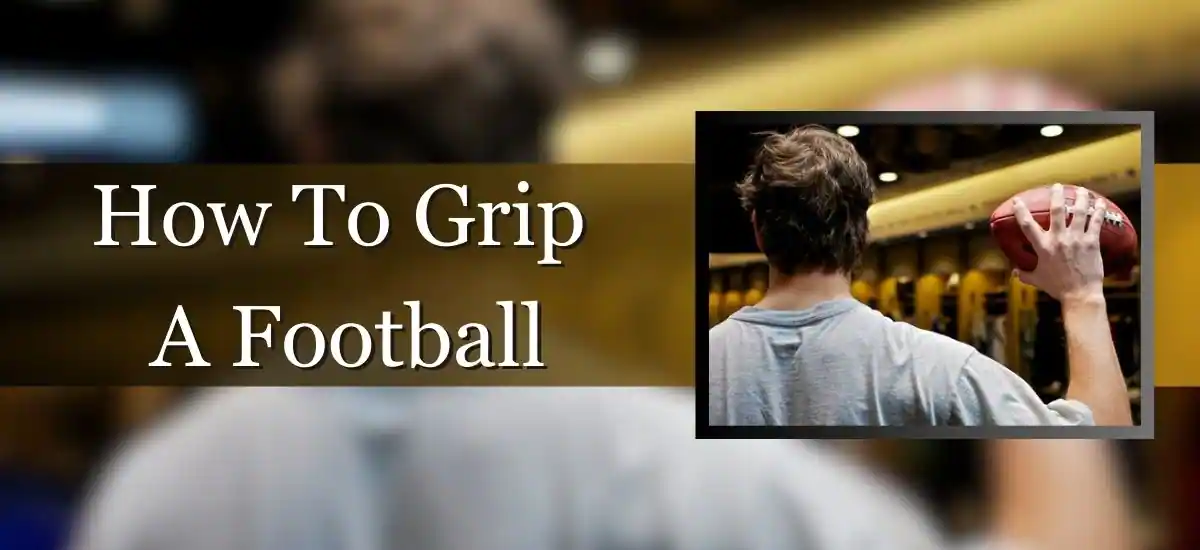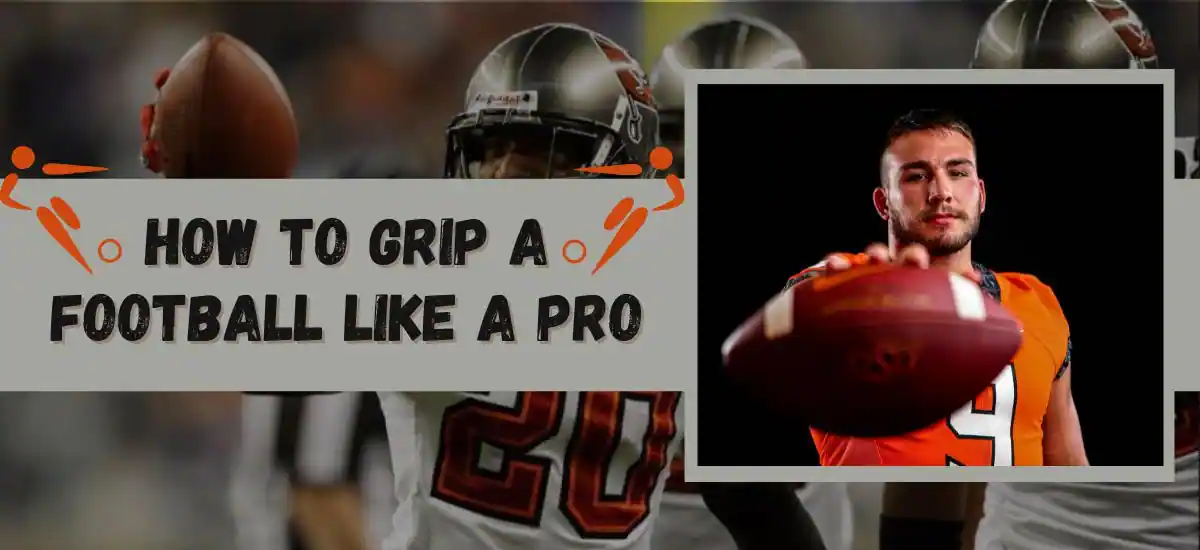How to grip a football? The most typical technique to grip a football is with your ring and little fingers crisscrossing the laces and your thumb resting below the football. Your index finger should be resting above a seam, and your thumb and index finger should produce the shape of an “L.” This article will provide further information on how to grip a football and discuss the experience’s practical aspects.
How To Grip A Football

The Football Grip is a popular variation used for various inverted movements. You can execute motions from the midsection down while maintaining at least two points of contact because of the elbows’ assistance, bringing the center of the body closer to the pole and helping keep additional points of contact. To get a better hold on a football, try the following steps:
- Holding on to the football with too much force might result in harm.
- Always keep a space open in the palm of your throwing hand so you can easily access your pocket.
- If you place the football in the palm of your hand, there is a greater chance that you may lose control of it and drop it on the ground.
- Bring the football up to your ear at a rate that is comfortable for you.
- One may determine the distance from the thrower’s ear to their hand by grasping the end of a plastic coat hanger and measuring the space. You should arrange yourselves in an “L” form.
Make Sure The Football Is Age-Appropriate

Practice is not necessary for children aged 4 to 12, but nothing can take the place of competing in actual games. And at the age of twelve, when the optimal period for football growth has passed, gains will be proportionately much lower despite all of the inputs.
When throwing from the “L” posture, the throwing arm’s elbow should remain pointed toward the target or receiver. Remember that your opposing foot should always point in the recipient’s direction when you throw a ball. A turret rotation describes this action. Relocating and starting again is essential. A football travels as follows, according to science:
- It’s estimated that a well-thrown spiral may reach speeds of 450 to 600 revolutions per minute.
- There must be three wobbles in flight to be considered a perfect spiral.
- There is an average of 82 miles per hour in the hands of a professional quarterback.
Hands-On Experience
Follow the below steps:
- Get a feel for the football by holding it in your hands. Then, spread your thumb, index, middle, and ring fingers, and aim to get at least two fingers (the very tips) on the laces.
- Don’t let your knuckles angle away from your laces
- Do not let your middle finger go too far from the white band. Depending on the size of the quarterback’s hand, the index finger may be repositioned nearer the nose of the football.
- Position your index finger in the space between your nose and the white stripe. In wet, cold, or hot conditions, some rookie quarterbacks like to rest their index fingers on the nose of the ball to prevent their throwing hand from slipping. This practice may be expected in specific locations for this exact reason, but it certainly isn’t the best option.
- Each finger used to hold a football signifies a different move you may make with it.
- When you use your thumb, you have a better grasp. The index finger is used for direction and leverage and is the final digit to be released. When you hold up your middle finger, you may think about equilibrium and rotation. The last two fingers establish pauses and wheels.
- Holding the football too tightly might cause injury. Instead, maintain a gap in the palm of your throwing hand so you can look into a pocket. Putting the football in the palm of your hand increases the risk that you’ll drop it on the ground.
- Raise the football to your ear at a comfortable pace. By gripping the end of a plastic coat hanger, one may gauge the distance from the thrower’s ear to their hand. Position yourself in the “L” shape.
- With a forward motion, pronate the thumb to the opposite thigh as you let go. Standing or sitting, your body and shoulders should be erect.
- While you may have a unique football from your days in high school or college, a child of six won’t get much experience with it. So go out and get a more appropriately sized ball for him.
The following are approximations:
- Those between the ages of six and nine are known as “peewees.”
- Junior size: 9-12 years old
- Youth size (12-14 years old)
- Official sizing for ages 15 and up
Frequently Asked Questions
Q1. How tight should I grip a football?
Ams: The traditional football grip has the thumb resting beneath the ball and the ring and little fingers crossing the laces. Instead, place your index finger above the seam, then form an “L” with your thumb and another finger.
Q2. How do NFL quarterbacks grip the football?
Ans: The correct grip is achieved by placing the top half of the football in the palm, with the pinky and ring fingers resting on the laces. You may adjust the height and angle of these to your liking. The seam of the football should be between your middle and index finger.
Q3. Can you be a QB with small hands?
Ans: ESPN claims that not a single starting quarterback in the NFL has such few hands. For example, no quarterback from last year’s group of 31 who threw at least 270 passes was shorter than nine inches. In addition, sharp Football Analysis reports that the NFL has not signed a single quarterback with a hand size of 812 inches or less in the past five years.
Related Post:
